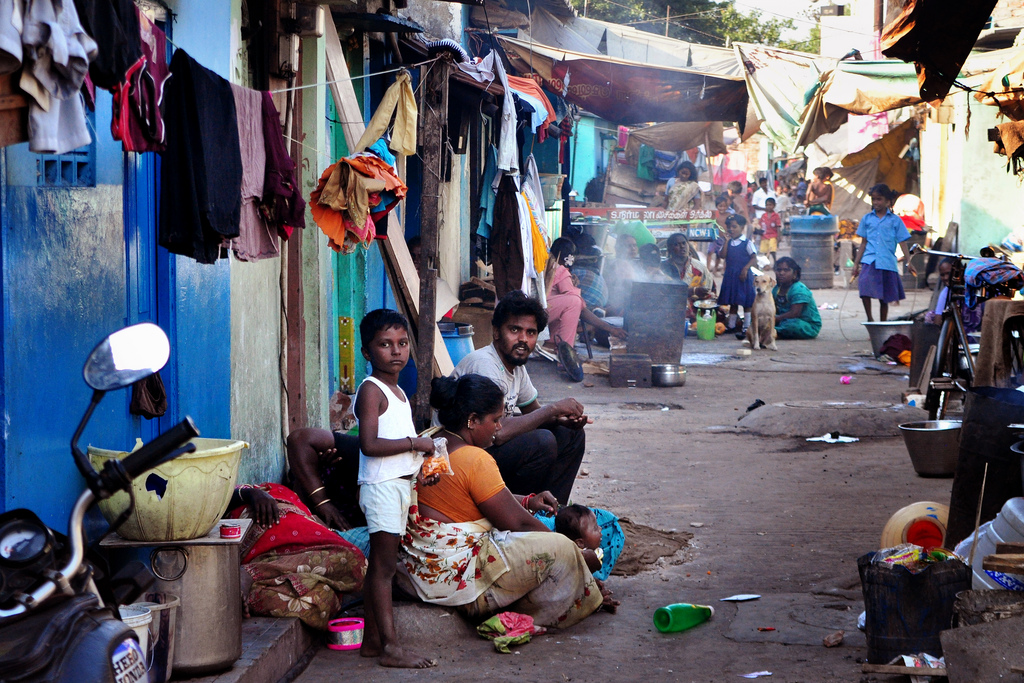The draft of Delhi’s latest Master Plan that will prevail for the next 20 years up to 2041, boldly declares that the city “is the seed-bed of new ideas and will continue to be the beacon of growth, a face of the ‘new urban India’”.
This is a clear warning to the rest of urban India to sit up urgently and take notice that whatever happens in Delhi now will soon happen in their cities and towns too.
The first caution is that Delhi is acknowledged as the fastest growing economy in the Asia-Pacific, but issues such as pollution, degraded built environment, congestion, lack of safety and disparate living conditions are not seen as threats to its citizens, but to “its market potential and global attractiveness”.
This distinctly economic approach is what frames the entire document. Thus, when it states that there is a “special thrust on urban regeneration especially of unplanned and unsafe areas and people’s health and livelihood”, all citizens need to cautiously negotiate what this splendidly articulated pro-people sentence really means.
What are these unplanned and unsafe areas which are going to merit special attention? As the draft makes clear later on, they are the “unauthorised colonies that fulfil the housing need by providing lesser expensive options (but) are unsafe”, “older built fabric… in dense areas of the city”, and “rental housing (in) unplanned settlements, with issues of tenure insecurity and compromised living conditions”.
According to the Baseline Report on Shelter, this would mean 63.1% of all households or even higher, considering that only 23.7% live in planned colonies but occupy 55% of the land! Thus, two out of every three homes in Delhi – even if they are providing affordable and accessible shelter to citizens who just cannot afford the outrageous land prices – will be “regenerated” because they are perceived by the planners as a threat to the city’s market potential.
The sinister design behind ‘urban regeneration’
This caution is well-merited if one delves deeper to understand what regeneration means. According to the Master Plan, it rests on four legs.
First, land rights will be provided to identified unauthorised colonies. In other words, these citizens who have already paid for the land, housing and services with their own hard-earned money will now be asked to pay even higher amounts in order to become “authorised”.
Also read: On Delhi’s Periphery, a Story of Urbanisation Gone Wrong
Second, in-situ slum rehabilitation schemes shall be implemented, ostensibly to reduce the threat of evictions, but actually to divest these citizens (19.1% of total) of their occupancy of that precious land (0.47% of total) and move them into cramped two-room flats in high-rise (as much as 15 stories and more) tenements after payment of the requisite fee for the luxury of being regenerated.

A woman hangs a blanket out to dry, at a slum in New Delhi, India January 2, 2020. Photo: Reuters/Danish Siddiqui
Third, rental and small format housing will be provided close to mass transit nodes such as the elevated corridors that are being built in Delhi, and clearly not in heart of the city.
Fourth, all this will be made possible by selectively increasing the floor area ratio (FAR) (along with Transferable Development Right) and reducing the norms, which means that buildings will grow taller and the space and services per person will grow tinier.
Genuine concern?
What about the great concern for people’s health and livelihood? Here is the second caution that words in this Plan often do not say what they mean.
Since both issues are seen from within the frame of the market, it is not surprising that the Plan reveals at an appropriate moment that “specialty health and higher education are focus areas” as well as niche sectors to fully realise Delhi’s economic potential. This clearly indicates that the health opportunity envisaged in the Plan is linked to super-speciality hospitals that will cater to the diseases of those who can afford such healthcare.
After all, they too are people; but the question is, are they the common citizens of Delhi for whom the Master Plan is being made? For such citizens, there is a mention of health but only in the context of whether their children will “grow up to be healthy and productive adults”.
A significant section of the Plan is devoted to livelihoods, but in a somewhat oblique way because the frame still remains that of Delhi’s global attractiveness. The draft appreciatively delineates the high literacy rate (86.2%) in the city with a workforce of about 1.1 million people between 15 and 59 years of age.
It emphasises “skilling and employment for youth as an imperative for talent retention”, a “focus on facilitating more women to join the workforce by providing safe and gender-friendly streets, public spaces and workplaces with adequate childcare facilities”, and the need to “harness the economic potential” of the increase in the proportion of persons of working age – once again characterising the citizen as a mere economic asset. The planners extend this logic beyond city boundaries by estimating that migration will contribute 41% of the population increase.
Also read: The Centre’s New ‘Transit Oriented Development’ Policy Will Wreck Delhi’s Environment
This workforce is optimistically expected to be absorbed in “cleaner production, start-ups, innovation and cyber economies”, and in “specialty health, higher education, tourism and MICE, modern logistics and specialized trade”. It is obvious that the labour force will no longer be accommodated in the manufacturing sector because “strategic industrial estates and District Centres” will be converted into specialised clusters of knowledge, finance, services, culture or creative hubs of hospitality, logistics and freight, health and education.

The busy, chaotic streets of the Paharganj area of Delhi. Photo: Flickr/McKay Savage/CC BY 2.0.
There is only a passing mention that currently the informal sector “is the largest employer in the city engaging approximately 70% of Delhi’s workforce”. With a flourish of a magician doing the vanishing trick, the Plan declares that this massive informal workforce will be upskilled “for incremental absorption into emerging formal economies”.
As for those who cannot make the cut, there are normative and contrarian statements that “due consideration” should be given to “provision of space for public conveniences, individual and group work as well as childcare, etc.,” as also “the Plan provides adequate space norms and facilities for supporting informal economies”. The fact that these good wishes are essentially directed at the working poor is underlined by the provision of multi-use community work centres/ work spaces “as part of regeneration or improvement of unauthorised colonies, urban villages and slums”.
The same framework of economic opportunism may be clearly perceived in all the other objectives for MPD-2041 related to environmental sustainability (rejuvenating natural assets and supporting green economies), enhancing heritage (opportunities for tourism), low-carbon mobility (homes and jobs closer to mass transit), and physical resilience (digital infrastructure). The city is perceived as just a big engine to consume assets (including human beings) and produce profits for investors.
Delhi for sale!
If this was not evident enough, the Master Plan for 2041 makes it explicit by referring to Master Plan 2021 that “recognized the need to facilitate the participation of private sector in the development process in order to overcome challenges associated with land acquisition” and building upon it to introduce privatisation into every sector from housing to solid waste disposal, repurposing wastelands and drains, transport to vending, heritage to energy and water, and planning to execution.
The final caution that emerges is the emphasis this Plan gives to monitoring and evaluation in order to “become adaptable to change and course correction”. There is a pronounced shift “from the creation of assets to the assessment of impacts”. In other words, there will be no longer any monitoring of how many houses were built or how many jobs were created or how many sewage treatment plants constructed, as may have been stipulated by earlier Plans.
Instead, what will be tracked will be how many slums were rehabilitated, what is the female participation in the workforce, and how much waste water is reused. This new approach fits in very well with the frame of how much the assets are used and reused so that Delhi becomes a beacon of growth that will attract investments and yield higher returns on those investments. It also has a retrospective effect because there is no longer any need to assess how effective the last Master Plan was in terms of delivering on targets.
For example, MPD-2021 had stated that 24 lakh DUs (dwelling units) had to be built in 20 years to both make up for the backlog as well as fill the need for a growing population. But in the current Plan, there is no assessment of whether those houses were built or not; instead there is the subterfuge of citing the Delhi Census of 2011 to show that the total number of households in Delhi then were 33.4 lakhs, and 33.13 lakh houses were occupied, hence the deficit is only about 27,000 housing units.
Also read: Why the Redevelopment of Delhi’s Central Vista Is a Matter of Grave Concern
The entire draft Plan is laden with such subterfuge, serving to conceal the real purpose of enhancing the city’s market potential. In more direct words, the city is being sold piece by piece to the highest bidder and the devil takes the hindmost.
As citizens’ groups and networks under different names queue up to meet the impossible deadline of 45 days to submit their objections, comments, and suggestions by July 21 on the draft Plan, most of them will be desperately seeking to find some little island for their survival in this sea of exclusion. They will welcome with vigour the idea of women-friendly spaces, of vending zones, of waste-pickers being integrated into the collection and processing stream, of in-situ resettlement, of efficiency and cleanliness. But few, if any, will have the stamina to challenge the ruthless fundamentals of neo-liberal growth and a privatised market-based economy.
Dunu Roy is with the Hazards Centre, New Delhi.




















